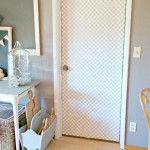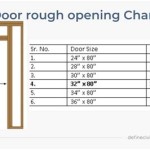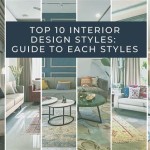```html
How to Find Your Own Interior Design Style
Interior design style is a reflection of personal taste, lifestyle, and aspirations translated into a visual and functional environment. Discovering one's unique interior design style can be an enriching process, leading to a home that feels authentic and comfortable. However, for many, pinpointing that perfect style can be daunting amidst the vast array of trends and options available. This article offers a strategic approach to uncovering individual preferences and translating them into a cohesive and personalized interior design style.
The journey to defining one's interior design style involves a careful examination of personal preferences, an understanding of different design principles, and a willingness to experiment. It's not about rigidly adhering to a specific label but rather about curating a space that resonates with the individual and fulfills their needs. This process requires introspection and a willingness to explore various design aesthetics.
Gathering Inspiration and Identifying Preferences
The first step in finding a personal interior design style is to gather inspiration from various sources. This involves immersing oneself in different design aesthetics and identifying elements that resonate. Look beyond typical interior design magazines and websites and consider a broader range of visual stimuli.
Begin by exploring different interior design styles. Familiarize yourself with terms like minimalist, maximalist, mid-century modern, bohemian, Scandinavian, farmhouse, industrial, traditional, and eclectic. Understand the defining characteristics of each style, including color palettes, materials, furniture shapes, and spatial arrangements. Online resources like Pinterest, Houzz, and design blogs are invaluable for visual exploration. These platforms offer vast collections of images showcasing diverse interior design styles, allowing for easy browsing and saving of inspiring ideas.
Beyond online platforms, consider real-world sources of inspiration. Visit show homes, showrooms, and open houses to experience different design styles firsthand. Observe how spaces are arranged, how furniture is chosen, and how colors are combined. Museums and art galleries can also provide valuable insights into color palettes, textures, and spatial relationships. Even travel experiences can inspire a unique design style by exposing one to different cultures and architectural traditions.
As inspiration is gathered, the next step is to identify recurring themes and preferences. Pay attention to the elements that consistently appeal. Are there particular color palettes that stand out? Are there certain furniture styles that are consistently favored? Are there specific textures or materials that evoke a positive emotional response? Keep a record of these preferences, whether it's through a mood board, a digital document, or a notebook. This record will serve as a guide in the subsequent stages of the process.
Consider the functionality of the space when gathering inspiration. A visually appealing design is only successful if it also meets the needs of the inhabitants. Think about how the space will be used, what activities will take place there, and what requirements need to be fulfilled. For example, a home office needs to be functional and conducive to productivity, while a living room needs to be comfortable and inviting.
Another crucial aspect is to consider the existing architecture of the home. The architectural style of the building can significantly influence the interior design style. A modern home might lend itself well to a minimalist or contemporary style, while a Victorian home might be better suited to a more traditional or eclectic style. Working with the existing architecture can create a more cohesive and harmonious design.
Analyzing Lifestyle and Practical Needs
An effective interior design style is not solely based on aesthetics but rather on a harmonious blend of visual appeal and practical functionality. Therefore, analyzing one's lifestyle and practical needs is a critical step in determining the most suitable design approach. This involves considering daily routines, hobbies, family dynamics, and any specific requirements that the space needs to accommodate.
Start by assessing daily routines. How is the space used on a daily basis? What activities take place in each room? For example, if one enjoys cooking, the kitchen needs to be designed with functionality in mind, with ample counter space, efficient storage, and appropriate appliances. If one works from home, a dedicated home office is essential, with a comfortable workspace, adequate lighting, and minimal distractions.
Consider hobbies and interests. Does one enjoy reading, painting, or playing music? The interior design should reflect these interests and provide a space to pursue them comfortably. For example, a reading nook with a comfortable armchair and adequate lighting can be created for avid readers. A dedicated art studio with proper ventilation and storage can be designed for artists.
Family dynamics also play a crucial role in determining the interior design style. A home with young children requires a different approach than a home with teenagers or an empty nest. Consider the needs of each family member and design the space accordingly. For example, a playroom with durable furniture and ample storage can be created for young children. A teenage hang-out zone with comfortable seating and entertainment options can be designed for teenagers.
Specific requirements should also be taken into account. Does anyone in the household have mobility issues? Does anyone have allergies or sensitivities to certain materials? The interior design should be adapted to accommodate these requirements. For example, wider doorways and ramps can be installed for individuals with mobility issues. Hypoallergenic materials and air purifiers can be used for individuals with allergies.
The budget is also a practical consideration. Interior design projects can range from budget-friendly to high-end. Determine a realistic budget and plan the design accordingly. Prioritize the most important elements and allocate the budget accordingly. It's possible to achieve a stylish and functional interior design without breaking the bank.
Finally, consider the long-term needs of the space. Will the space need to be adaptable in the future? Will the family size change? Design the space with future flexibility in mind. Choose furniture that can be easily rearranged or repurposed. Opt for neutral color palettes that can be easily updated with accessories.
Experimenting and Refining the Style
Once inspiration has been gathered and lifestyle needs have been analyzed, the next step is to experiment with different design elements and refine the overall style. This involves creating mood boards, experimenting with color palettes, and testing different furniture arrangements. It's an iterative process that requires patience and a willingness to adjust the design as needed.
Creating mood boards is a valuable tool for visualizing the design style. A mood board is a collection of images, textures, colors, and materials that represent the desired aesthetic. It can be created physically or digitally. Gather images from magazines, websites, and other sources that resonate with the preferred style. Arrange these images on a board to create a visual representation of the overall design direction. The mood board will serve as a guide when selecting furniture, paint colors, and accessories.
Experiment with different color palettes. Color plays a crucial role in setting the mood and tone of a space. Explore different color combinations and see how they affect the overall feeling of the room. Consider using a color wheel to understand the relationships between different colors. Test paint samples on the walls to see how the colors look in different lighting conditions. Don't be afraid to experiment with bold colors, but be mindful of the overall balance and harmony of the color scheme.
Test different furniture arrangements. The arrangement of furniture can significantly impact the flow and functionality of a space. Experiment with different layouts to find the most comfortable and efficient arrangement. Consider the focal points of the room and arrange the furniture accordingly. Ensure that there is enough space for comfortable movement and that the furniture is appropriately sized for the room.
Start small and gradually implement the design changes. It's not necessary to renovate the entire house at once. Start with one room or one area and gradually work towards completing the entire project. This allows for experimentation and refinement along the way. It also makes the project more manageable and less overwhelming.
Don't be afraid to make mistakes. Interior design is a learning process. Not every design decision will be perfect. Be willing to experiment and learn from mistakes. If something doesn't work, don't be afraid to change it. The goal is to create a space that feels personal and comfortable, even if it's not perfect.
Seek feedback from others. Ask friends, family, or even a professional interior designer for their opinions on the design. This can provide valuable insights and help to identify areas for improvement. However, ultimately, the final decision should be based on personal preferences and needs.
Throughout the process, remember that finding a personal interior design style is a journey, not a destination. The style will likely evolve over time as tastes and needs change. Embrace the process and enjoy the creation of a space that truly reflects the individual.
```
How To Find Your Unique Personal Interior Design Style Dwell Beautiful

How To Find Your Personal Interior Design Style

How To Find Your Unique Personal Interior Design Style Dwell Beautiful

Find Your Personal Style Interior Designer Can Make It Happen
Design Styles How To Find Yours Mar 30 Interior Work Registration Sat 2024 At 10 00 Am Eventbrite

Interior Design Styles 101 The Ultimate Guide To Decorating In 2024 Decorilla
How To Find Your Interior Design Style Part 2 Of

How To Find Your Unique Personal Interior Design Style Dwell Beautiful

Find Your Own Interior Design Style Decor And You
How To Find Your Interior Design Style Part 2 Of
Related Posts








